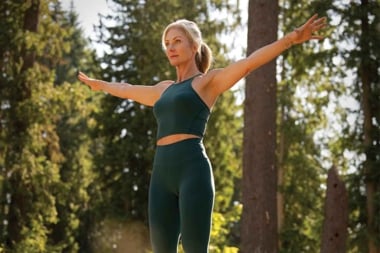Fitness
</P> Does getting older mean becoming weaker? Although this tends to be the assumption, it doesn't have to be the truth. Gradual muscle loss has been shown to be a normal part of the aging process.
Forever strong
Does getting older mean becoming weaker? Although this tends to be the assumption, it doesn't have to be the truth.
Gradual muscle loss has been shown to be a normal part of the aging process. Muscle loss begins as early as age 30 and continues to decline each decade. However, this process can be slowed down. An interesting study by researchers from Denmark found that regular exercise - in particular strength training - helps men and women maintain strength later in life by slowing down the process of age-related muscle loss.
The researchers of the study took a look at a group of elderly people and found that while initial strength played a large role in strength improvements, the population in general benefited from strength training with greatest response in the frail elderly. These findings led the researchers to conclude that even though strength may decrease with aging, it can be maintained and improved with regular exercise regardless of age or ability.
Add longer walks to your exercise routine
Walking is a very popular form of exercise today. Many people walk for good health on a regular basis, while others have chosen to add small jaunts here and there throughout the day to increase their amount of movement. The good intentions are certainly there, but, according to researchers, this might not be enough.
A recent study published in the American Journal of Public Health (September 2003) has shown that while walking is popular, few people do enough of it to benefit their health. Researchers of this study surveyed healthy workers and homemakers and found that while most walked for transport or recreation, only 17.2 percent actually did enough walking to gain health benefits. However, those participants reporting regular walks as well as other activities on a regular basis were more likely to achieve the recommended levels of activity.
So, while walking is definitely good for the body, a comprehensive exercise program that encourages an array of activities like swimming and biking, in addition to walking, may help people to better meet their minimum exercise requirements.




